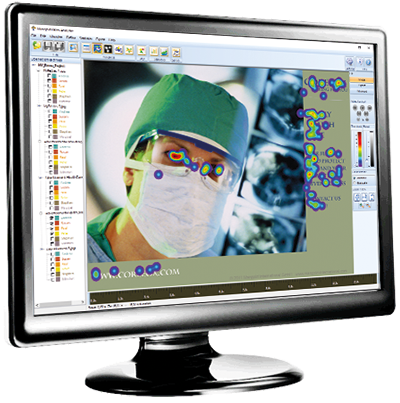Look me in the eye, baby!
During face-to-face conversation some people gaze mostly at the eyes of their partner, while others gaze mostly at the mouth, and there are also other people who rapidly switch their gaze between the eyes and the mouth over time.
Where, how often, and how long you look at someone’s eyes and mouth during a face-to-face conversation was the key question of a recently published behavioural study in the journal Scientific Reports.
Dr. Shane L. Rogers and his colleagues from Edith Cowan University in Perth, Australia, uncovered the existence of very specific personal eye gaze patterns, and his team presented for the first time the prevalence of mutual eye contact that occurs during conversation.
The results showed, that in general, people over-estimated the amount of mutual eye contact that had occurred during a conversation. The reason: During conversation people are so focused upon what the other person is saying,
and thinking of what to say themselves, that they find it difficult to pay close attention to the very subtle eye movements of their partner. If someone is looked upon their face somewhere, either at the forehead, eyes, nose, or mouth there is a bias to perceive mutual eye contact. So, in many instances people perceive mutual eye contact, when instead it is more accurately characterized as mutual face gaze.
This research represented a first step towards better understanding eye gaze patterns during conversation. What potential consequences a person’s idiosyncratic gaze patterns have for their social interactions, and learning and memory ability, is going to be the focus of follow-up studies.
Exploration of hidden information by using INTERACT
For this study the researchers used an eye tracking technology and the behavioural coding software Mangold INTERACT. To measure the fixations of gazes from two audiovisual files, which were shown simultaneously in playback, they coded the locations of the fixations manually. Both on-face locations (i.e., forehead, eyes, nose, and mouth) and off-face locations (up, down, left, right) were considered. The special advantage of using Mangold INTERACT was that it enabled a more accurate measurement of off-face glances, and it made it possible to quantify mutual eye contact and mutual face gaze which would not have been possible otherwise.

In conclusion the quantitative software helped to establish a meaningful category system to reduce and understand the complexity of the tracked data. In addition, the visualizations that are easily generated by the Mangold INTERACT program at the click of a button helped with interpretation and were used as part of the journal publication to present the results. Finally, an important statistic to demonstrate inter-rater reliability (Cohen’s Kappa) was calculated by using Mangold INTERACT.
Discover the unseen with MangoldVision


Multiple eye tracking, a choice of various stimuli (images, videos, websites), simultaneous playback and full user experience recording (mouse, audio, camera and keyboard entries). These are only a few of the features of the eye tracking software MangoldVision.
For studies of psychology, neuroscience, marketing, design or usability – with the hard- and software of MangoldVision there are no limitations anymore. Discover the unseen with the eye tracking system MangoldVision!
